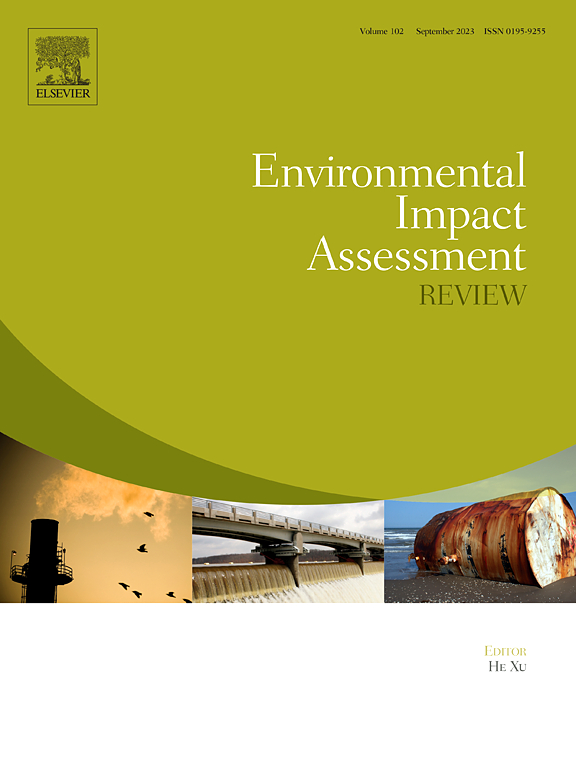Seasonal synergistic management of urban heat island effect and PM₂.₅ pollution: Insights from interpretable LightGBM-SHAP machine learning model
IF 11.2
1区 社会学
Q1 ENVIRONMENTAL STUDIES
引用次数: 0
Abstract
Urban heat island (UHI) effect and fine particulate matter (PM2.5) have emerged as two major challenges in urban environmental management, with their interactions further exacerbating threats to global public health. However, strategies for the synergistic management of these two challenges remain limited. To address this gap, we proposed a new synergistic management framework incorporating temporal and spatial dimensions and empirically apply it to Guangdong-Hong Kong-Macao Greater Bay Area (GBA). We analyzed the seasonal spatial distribution of UHI effect and corresponding PM2.5 concentrations, identifying their spatial synergy using bivariate spatial analysis. Furthermore, an interpretable LightGBM-SHAP machine learning model was applied to explore the key driving factors and underlying mechanisms jointly influencing UHI and PM2.5. The results showed that spatially synergistic regions of UHI and PM2.5 were mainly concentrated in the central and northwestern parts of the GBA, particularly in Guangzhou, Foshan, and Zhaoqing. The spatial synergy peaked in summer with a coverage of 73.73 %, highlighting the need for prioritized intervention during this season, while it declined markedly to 46.95 % in winter. Across all seasons, building density (BD) and building shape index (BSI) were identified as key drivers with positive synergistic effects, whereas green space ratio (GSR) and mean annual precipitation (MAP) exhibited negative synergistic impacts. Additionally, factors such as nighttime light (NL), blue space ratio (BSR), edge density (ED), and built-up land ratio (BLR) showed synergistic influence in specific seasons. This study can provide support for the development of more targeted and seasonally adaptive strategies for the synergistic management of urban thermal environments and air quality.

城市热岛效应与pm2的季节协同管理。₅污染:来自可解释的LightGBM-SHAP机器学习模型的见解
城市热岛效应和细颗粒物(PM2.5)已成为城市环境管理面临的两大挑战,它们之间的相互作用进一步加剧了对全球公共卫生的威胁。然而,协同管理这两个挑战的战略仍然有限。为了解决这一差距,我们提出了一个结合时空维度的新的协同管理框架,并将其实证应用于粤港澳大湾区。通过双变量空间分析,分析了城市热岛效应与PM2.5浓度的季节空间分布,确定了两者的空间协同效应。此外,应用可解释的LightGBM-SHAP机器学习模型探讨了共同影响UHI和PM2.5的关键驱动因素和潜在机制。结果表明:城市热岛指数与PM2.5在空间上的协同区域主要集中在大湾区中部和西北部,以广州、佛山和肇庆为主;空间协同效应在夏季达到峰值,覆盖率为73.73%,突出了夏季优先干预的必要性,而在冬季则明显下降至46.95%。在不同季节,建筑密度(BD)和建筑形状指数(BSI)为主要驱动因素,具有正协同效应,而绿化空间比(GSR)和年平均降水量(MAP)具有负协同效应。夜间光照(NL)、蓝色空间比(BSR)、边缘密度(ED)和建设用地比(BLR)等因子在特定季节表现出协同效应。该研究可为城市热环境和空气质量协同管理提供更具针对性和季节性适应性的策略支持。
本文章由计算机程序翻译,如有差异,请以英文原文为准。
求助全文
约1分钟内获得全文
求助全文
来源期刊

Environmental Impact Assessment Review
ENVIRONMENTAL STUDIES-
CiteScore
12.60
自引率
10.10%
发文量
200
审稿时长
33 days
期刊介绍:
Environmental Impact Assessment Review is an interdisciplinary journal that serves a global audience of practitioners, policymakers, and academics involved in assessing the environmental impact of policies, projects, processes, and products. The journal focuses on innovative theory and practice in environmental impact assessment (EIA). Papers are expected to present innovative ideas, be topical, and coherent. The journal emphasizes concepts, methods, techniques, approaches, and systems related to EIA theory and practice.
 求助内容:
求助内容: 应助结果提醒方式:
应助结果提醒方式:


